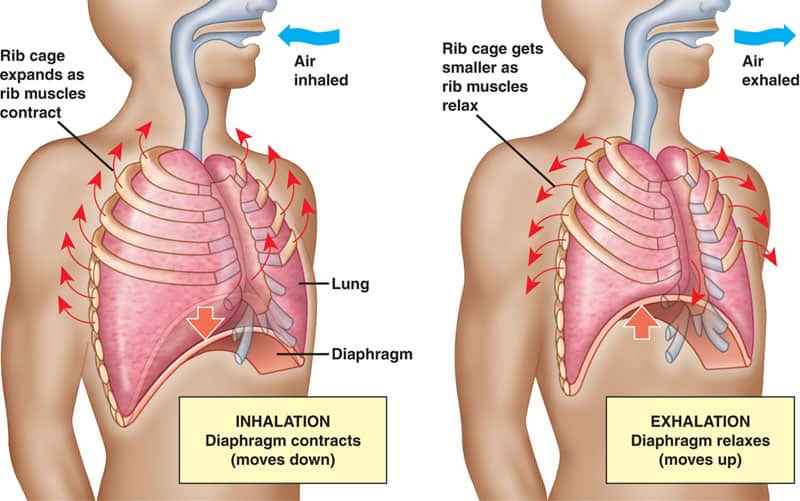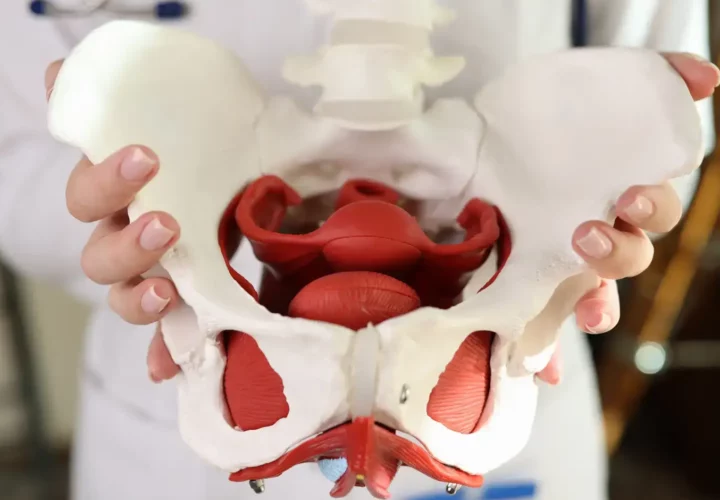What is diaphragmatic breathing?
Diaphragmatic breathing is a type of breathing that helps strengthen some of your respiratory muscles to make sure you are taking enough breath support, as well as help control your rate of breaths. One of the main muscles it helps strengthen is your diaphragm, which is a major muscle in your chest and abdomen that helps contribute up to 80% of your breathing efforts. This type of breathing can also be called belly breathing or abdominal breathing.
Why is diaphragmatic breathing important?
Not only does diaphragmatic breathing help with strengthening the respiratory muscles of the body, but it also helps in achieving more efficient ventilation.This means that the body does not have to work as hard to provide oxygen and nutrients to its cells. Practicing controlled breathing allows the lungs and the body to become efficient, and not to rely so much on accessory muscles. Accessory muscles for breathing are mainly the ones that surround your neck and chest, and typically require more energy to use. You’ll see them more prominently if you take a deep, quick breath in. Excessive use of accessory muscles during breathing can also contribute to poor posture and potential neck pain.
What are the main goals of diaphragmatic breathing?
Not only does it help make breathing become more efficient, but it also helps mobilize secretions (mucus that may be trapped that makes you feel congested), help with controlling your posture, relaxation, and pain control.
Now how does breathing do all of that?
Moving secretions in your lungs
A. Diaphragmatic breathing helps expand the diaphragm and creates a pressure difference in the areas around your lungs. These pressure differences will help move any mucus stuck at the base of the lungs, and makes it easier to get rid of excess mucus when you take a deep cough. This is especially helpful if you are stuck in bed for long periods of time.
B. People that have certain conditions that affect their respiratory systems; such as: COPD, emphysema, or neurological conditions can also benefit from diaphragmatic breathing to help increase oxygen levels, remove any built-up congestion, help with coordination of your respiratory muscles, and avoid use of accessory muscle breathing to improve energy conservation.
Being aware of your postural awareness and sense of position of body
A. Incorporating diaphragmatic breathing into any physical activity not only helps in getting oxygen more efficiently into the muscles, but also helps in incorporating your “core” muscles into your physical activities. When you practice diaphragmatic breathing correctly, you should be able to see your belly expand in a controlled manner and your posture get taller.
B. Diaphragmatic breathing is also a good cue to give yourself during exercise to determine how to scale your exercise. If you find yourself holding your breath, you are not allowing your muscles or your body to get enough oxygen and may dangerously increase your blood pressure. Training yourself to be able to take deep, regular breaths can make your exercise more efficient.
Relaxation
A. Diaphragmatic breathing helps stimulate a nerve located in your chest called the vagal nerve. This nerve contributes to your “fight-or-flight” sensation, as well as helps control your heart rate, blood pressure and breathing. Gentle stimulation of that nerve can help decrease the “fight-or-flight- sensation that contributes to feeling stressed, as well as helps decrease heart rate and blood pressure as well. This type of breathing also helps you focus on your breaths, which can block out any busy thoughts that may have you feeling stressed.
Pain Control
A. Similar to the same reasoning as why it helps with relaxation; in times where the body is experiencing pain for long periods of time, the nervous system can see this as a reason for “stress,” and may increase the activity of the vagal nerve.The controlled breathing exercises can provide gentle stimulation of the vagal nerve to help relax pain signals.
How do I do “diaphragmatic breathing?”
The best part of diaphragmatic breathing is that there is no right or wrong dose of how many times you can do this. You can include this in any part of your day. Right before getting out of bed, during exercises, right before going to sleep, or any time you feel highly tense or stressed.
- Lie on your back on a flat surface (or in bed) with your knees bent. You can use a pillow under your head and your knees for support if that’s more comfortable.
- Place one hand on your chest and the other on your belly.
- Breathe in slowly through your nose, letting the air in deeply, towards your lower belly. The hand on your chest should remain still, while the one on your belly should rise.
- Tighten your abdominal muscles and let them fall inward as you exhale through your mouth. The hand on your belly should move down to its original position.
- You can also practice this sitting in a chair, with your knees bent and your shoulders, head, and neck relaxed. Practice for five to 10 breaths, several times a day if possible
- Be sure not to hold your breath for prolonged periods of time. If you start feeling dizzy or short of breath, you may have to consider changing positions or decreasing frequency.
Is diaphragmatic breathing actually that effective?
There have been several research studies that discuss the benefits of including diaphragmatic breathing into your daily routine. One study by Ubolnuar et al. found that incorporating diaphragmatic breathing in patients that had COPD can help control respiratory rate (the amount of breaths you take in a minute). It may decrease sensations of feeling out of breath. Other studies observed indirect measures of stress such as blood pressure and heart rate. Findings found that there may be some positive relationships with the addition of diaphragmatic breathing. Other studies found that combining diaphragmatic breathing with typical physical therapy interventions for neck pain may also be a positive factor in reducing pain.
Bottom Line
During these challenging times, we may find ourselves more tense and stressed at home. Incorporating diaphragmatic breathing in combination with physical activity, and meditation can be a positive complement to your mental, physical and respiratory health. Think about including them in times of the day that are going to be easier to remember. As well as doing them in quiet areas to allow full relaxation.



